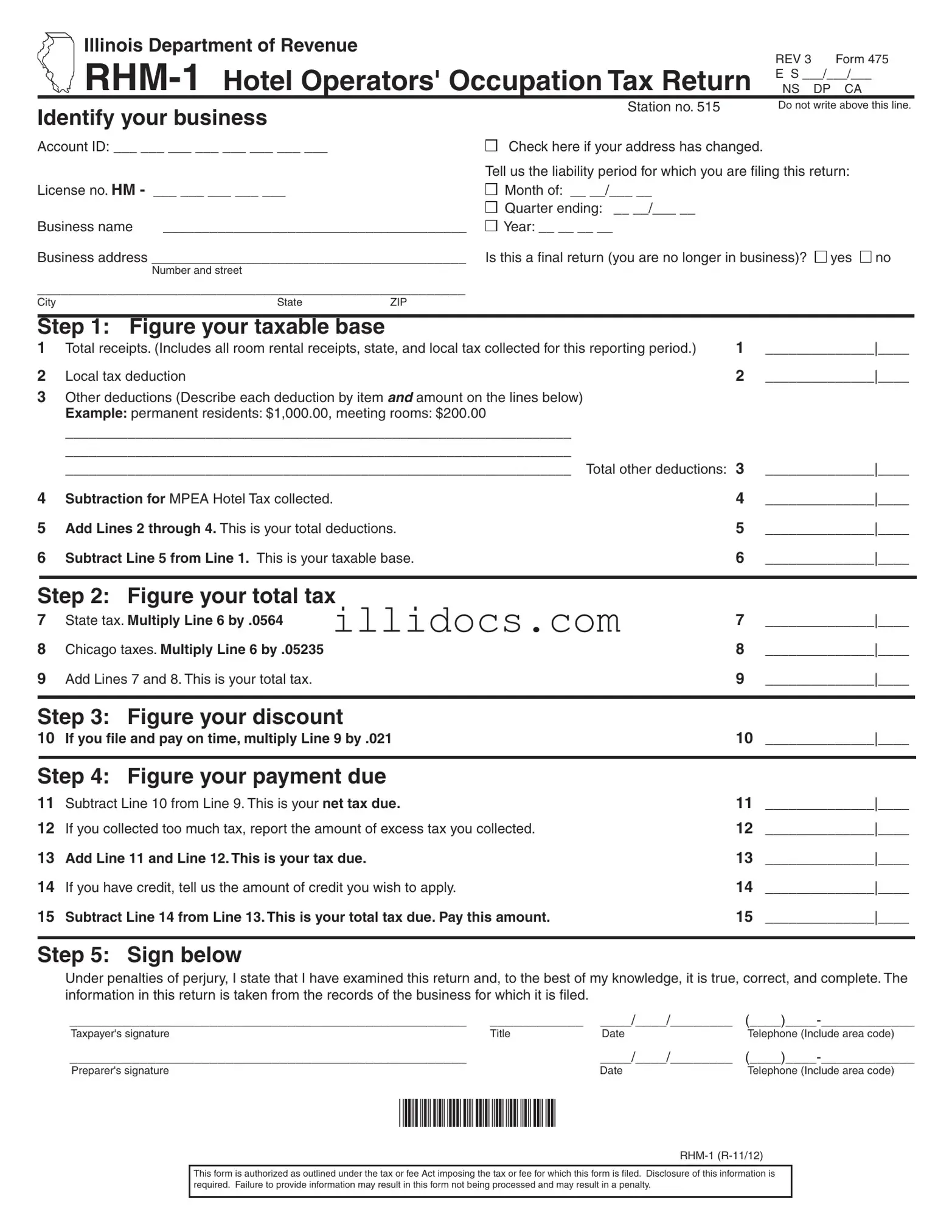The Illinois RHM-1 form is a crucial document for hotel operators in the state, as it serves as the Hotel Operators' Occupation Tax Return. This form is designed to help businesses report their tax liabilities accurately and efficiently. It covers essential details such as total receipts from room rentals, local tax deductions, and other permissible deductions. Additionally, the RHM-1 requires operators to calculate their taxable base, state tax, and any applicable city taxes. There’s also a provision for discounts if the tax is filed and paid on time. Completing this form involves several steps, including figuring out the total tax due and any credits that may apply. It’s important to note that the form must be signed under penalties of perjury, ensuring that the information provided is accurate and complete. Understanding how to navigate the RHM-1 form is vital for compliance and can help avoid potential penalties for incorrect filings.
